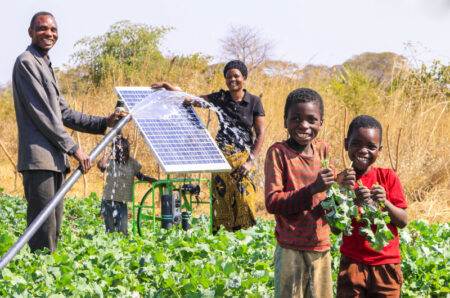- In West Africa, half of the 11.6 million individuals, who were set to receive food aid between June to August, will not get any support.
- Only about 6.2 million people will get support. They are mainly refugees, displaced individuals, malnourished children under the age of 5, pregnant and breastfeeding women, and girls.
- Populations at risk as spread across Burkina Faso, Chad, Central African Republic, Cameroon, Mali, Mauritania, Niger, and north-eastern Nigeria.
Millions of people grappling with West Africa’s hunger crisis will not receive emergency assistance between June and September due to limited funding. According to the World Food Programme (WFP), almost half of the 11.6 million individuals, who were set to receive food aid between June to August, will not get any assistance.
The shock revelation comes as WFP and authorities in the Sahel region struggle with the worst hunger crisis in 10 years.
Populations in Mali and Chad will face the severest impacts. About 800,000 individuals in both countries are at risk of resorting to extreme measures such as engaging in survival sex, early marriage, or joining non-state armed groups.
Conflict worsening West Africa’s hunger crisis
The WFP lean season response aims to support the efforts of national governments in addressing hunger. Sahel region is also struggling with the challenges of conflict, climate crisis, and surging costs of food and fuel.
Originally, WFP had set a target to assist 11.6 million people, out of the total 19.2 million individuals. These vulnerable populations are spread across Burkina Faso, Chad, Central African Republic, Cameroon, Mali, Mauritania, Niger, and north-eastern Nigeria. (https://richmondartcenter.org/) The UN agency says they will require support from June to September 2023.
However, due to funding shortfall, WFP will only offer assistance to only 6.2 million of the most vulnerable individuals. The agency will focus on refugees, newly displaced individuals, malnourished children under the age of five. What’s more, pregnant women, breastfeeding women, and girls will also be prioritized.
“We’re in a tragic situation. During this year’s lean season, millions of families will lack sufficient food reserves to sustain them until the next harvests in September and many will receive little to no assistance to tide them through the gruelling months ahead. We must take immediate action to prevent a massive slide into catastrophic hunger,” said Margot Vandervelden, Regional Director ad interim, for Western Africa.
Investing in resilient food systems
“We need a twin-track approach to stop hunger in the Sahel. We must address acute hunger through humanitarian assistance while tackling the structural causes of food insecurity by increasing investments in resilient food systems and expanding government social protection programmes,” Vandervelden added.
Across West and Central Africa, the level of food insecurity has hit the highest point in a decade. A total of 47.2 million individuals are grappling through the lean season from June to August.
Disturbingly, according to the March Cadre Harmonisé analysis, 45,000 people in Burkina Faso and Mali are facing catastrophic hunger.
As a result, malnutrition rates are surging. At the moment, an estimated 16.5 million children under the age of 5 at risk of acute malnourishment this year. This will be a jaw-dropping 83 percent increase compared to the average from 2015 to 2022.
This year alone, the African Risk Capacity (ARC) disbursed climate risk insurance payouts amounting to $15.4 million. These funds saw WFP offer cash transfers to 490,000 drought-stricken people across Burkina Faso, The Gambia, and Mali in 2022.
WFP says this response played a crucial role in helping farmers recover from the adverse effects of drought. The farmers used the cash for essential requirements, including acquiring food, and seeds for the subsequent planting season.
Support to smallholder farmers
Currently, the WFP is implementing an integrated resilience program in the Sahel region. The plan is focusing on participatory watershed planning, land recovery, and rehabilitation, and providing support to smallholder farmers.
This program is offering promising outcomes. Participating households are demonstrating enhanced capabilities to withstand shocks and exhibit improved resilience during lean seasons.
A notable example is Niger, where 80 percent of villages that received WFP’s resilience support in 2022 did not require humanitarian assistance, distinguishing them from other villages in the same areas.
Investments made in strengthening resilience over the long term have seen about half a million individuals escape the need for emergency food aid. Expanding these activities will be of utmost importance in preventing the escalation of emergency needs.











